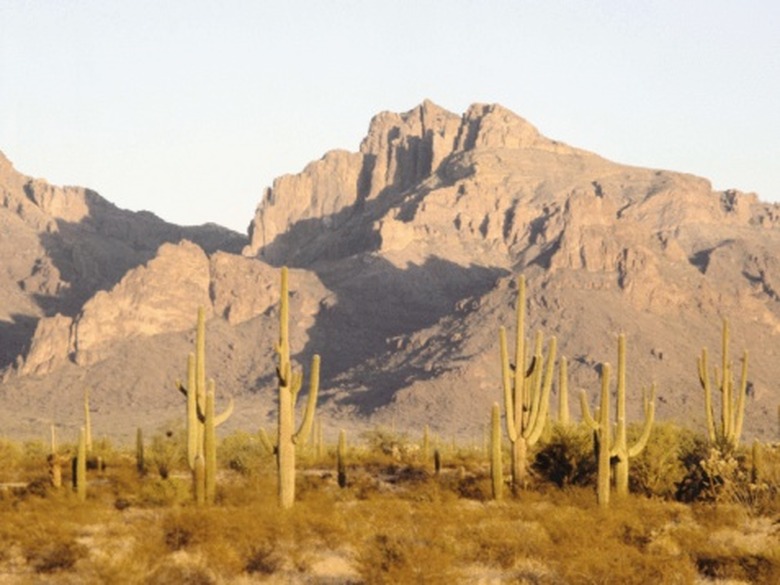Niches In Deserts
The word "niche," used in a biological sense, can mean the role a certain species plays in a particular ecosystem as well as the particular micro-ecosystem in which the species lives. Deserts are home to a variety of niches in their ecosystems and to many species that have adapted to them.
Desert Niches
Desert Niches
At first glance, deserts may seem devoid of wildlife. But in reality, deserts have large and diverse populations. Species have adapted to these dry, often tree-less environments, and each fills an important role in the overall ecosystem. Adaptations include a species' selection of food, water and shelter as well as other facts of its behavior. Niches within desert ecosystems include open desert scrub, open grasslands, washes and sandy soils.
Merriam's Kangaroo Rat
Merriam's Kangaroo Rat
One example of a species that is highly adapted to its niche in Arizona's Sonoran Desert is Merriam's kangaroo rat. This rodent never has to drink water, because it gets all the moisture it needs from its diet of seeds and mesquite beans. To escape the scorching desert heat, the kangaroo rat sleeps all day in cool underground burrows. The rodent also has adapted to escape from predators. It has excellent hearing and is able to detect owls approaching. It can also jump up to nine feet in order to escape enemies such as snakes, bobcats, foxes and coyotes.
Spinifex Hopping Mouse
Spinifex Hopping Mouse
Another species similar to the kangaroo rat is the Spinifex hopping mouse, which fills a niche in Australia's central desert. The hopping mouse is nocturnal and stays hidden in deep, humid burrows during the heat of the day. If the rodent does get too hot in its burrow, it has the ability to raise its body temperature so its surroundings feel cooler. Like the kangaroo rat, the hopping mouse can survive without ever drinking water. Its efficient kidneys filter every drop of water out of its waste, resulting in solid urine.
Other Desert Niche Species
Other Desert Niche Species
Many other species have adapted to desert niches, including ravens, vultures, coyotes, badgers and jackrabbits. Jackrabbits have adapted to eating whatever vegetation is available, from leafy plants in the spring and summer to woody shrubs in the fall and winter. Jackrabbits do not need water to survive, and they reproduce rapidly to offset their numbers that are eaten by coyotes, eagles and snakes. Dozens of species of reptiles have also adapted to desert niches. The desert iguana is the most heat-tolerant reptile in North America, often basking in the sun when other animals would die from the heat.
Cite This Article
MLA
Huntington, Matthew. "Niches In Deserts" sciencing.com, https://www.sciencing.com/niches-deserts-8320365/. 22 November 2019.
APA
Huntington, Matthew. (2019, November 22). Niches In Deserts. sciencing.com. Retrieved from https://www.sciencing.com/niches-deserts-8320365/
Chicago
Huntington, Matthew. Niches In Deserts last modified March 24, 2022. https://www.sciencing.com/niches-deserts-8320365/
